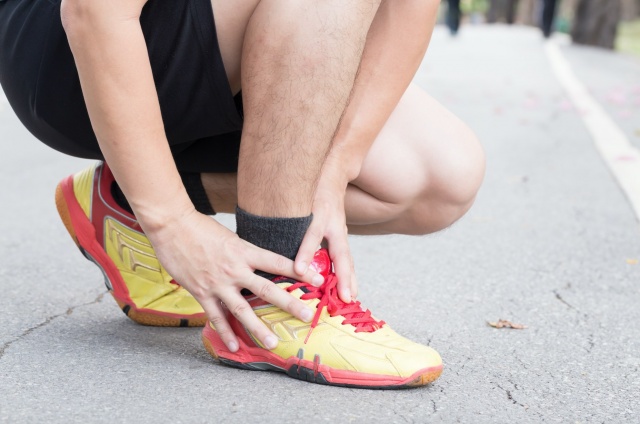 What is Tendinitis?
What is Tendinitis?
In the body, tendons are the cords that attach the muscles to the bones. With these attachments, the muscles are able to move the bones in your body. Tendinitis is a common type of tendon injury and it is usually the result of overuse.
For athletes, issues with tendinitis are quite common. In fact, many different forms of tendinitis have names that associate the specific condition with the athletes who are likely to experience it, such as tennis elbow, jumper’s knee, pitcher’s shoulder, and golfer’s elbow.
Tendinitis is inflammation of the tendon and results in pain and tenderness at the joint. In many cases, tendinitis also results in stiffness, weakness, and a lack of mobility around the injured tendon. While most issues with tendinitis can be resolved with rest and therapy, severe cases of tendinitis can result in a rupture.
Types of Tendinitis
Elbow
For people that play racquet sports, a common type of tendinitis is tennis elbow. At the elbow, you have muscles and tendons that control the movement of the lower arm. Through the repeated exertion that comes with swinging a racquet, some of the tendons that connect at the elbow can become inflamed. Tennis elbow results in pain on the outside of the elbow and a lack of strength in the lower arm and wrist.
Golfer’s elbow is similar to tennis elbow, but it affects different tendons in the arm. With golfer’s elbow, the tendons that attach on the interior side of the elbow are affected. An individual suffering from this form of tendinitis will feel pain around the bump that sticks out from in the inside part of the elbow, and pain and stiffness when using the lower arm and wrist.
Knee
As the name suggests, jumper’s knee is a type of tendinitis that often affects athletes who do a lot of jumping. This type of tendinitis is an inflammation of the tendon that connects the patellar to the tibia. Usually, this will result in pain in the knee area, and it can also cause pain that runs down from the knee to the shin.
Shoulder
Pitcher’s shoulder is a type of tendinitis that occurs in the tendons of the rotator cuff in the shoulder. It is common among baseball pitchers and other throwing athletes like quarterbacks. This type of tendinitis will usually cause pain in the front of the shoulder and down the side of the upper arm. In addition to that, it will cause stiffness and pain when the arm is in an overhead position.
Heel
Achilles Tendonitis affects the tendon that connects the calf muscle to the back of the heel. Achilles tendon injuries are mostly found in athletes who spend a lot of time running and jumping. This ailment causes extreme pain, tenderness, and inflammation in the back of the ankle just above the heel and extends up to the base of the calf.
Prevention Tips
For the most part, tendinitis is not a serious injury and it can be treated with rest and therapeutic exercise. However, when these injuries are not allowed the time to heal, they can get worse and contribute to other injuries. In the prevention of tendinitis, there are several steps that an athlete should take.
- Warm up: When you have been inactive, your tendons are not ready for heavy exertion. To prevent injury, you need to warm up, stretch and build up the activity in a gradual manner.
- Equipment: For golfers and tennis players, the right equipment can help to prevent tendinitis in the elbow. If your clubs or racquets are sized wrong, it can expose you to an increased risk of tendinitis in the elbow.
- Strength: Build the strength of the muscles in the area. If the muscles in the area are stronger, it will take stress off the tendons and reduce the risk of injury.
- Technique: One of the most common causes of sporting injury is flawed technique. Make sure that you are using the right mechanics and technique for all sports and exercise.
- Set Limits: Since tendinitis is often caused by overuse, setting limits on activity will reduce the chances of injury. Set limits for the actual activity and allow for adequate rest time between events.
This is Part 2 of an 11 Part Series.
(Click Here) to Read Part 1: Shin Splints
Check out our articles and infographics to learn a multitude of ways to start relieving your pain naturally!
Real Time Pain Relief not only cares about the quality ingredients that go into each and every one of our products – but also about the people who buy them. We hope this blog becomes a valued resource for your own personal journey to better health. For more than 17 years, Real Time Pain Relief has provided family safe pain relief made with Nature’s Ingredients. From the useful information in our articles to our high-quality natural products, we hope you feel better and pass it on!
- Log in to post comments

